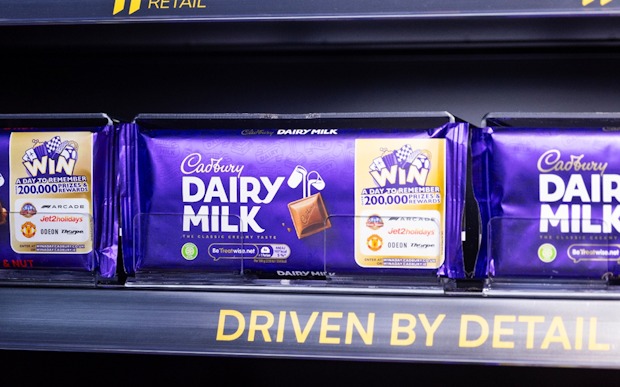UK retailers continue to be plagued by snack theft across checkout areas in stores, with thieves targeting confectionery such as chewing gum, chocolate, and crisps due to their small size and ease of concealment. Confectionery and chocolate alone account for 7% of all stolen grocery items in the UK, highlighting the scale of the issue.
 According to Harrison Retail, chocolate and snack loss prevention dispensers can deter snack sweeping at the checkout, reducing shrinkage.
According to Harrison Retail, chocolate and snack loss prevention dispensers can deter snack sweeping at the checkout, reducing shrinkage.
“At the checkout, there is less staff oversight in stores, leading to high temptation for snack theft,” said Rolf Whiteman, Sales Director, at Harrison Retail.
“Most customers who steal snacks in stores are doing so for the thrill, even if they have the financial means. Confectionery theft at the checkout is contributing to rising costs in retail, prompting many retailers to adopt new security measures. But such measures do not have to be overly complicated, like AI and VAR-style systems.
“Loss prevention dispenser solutions can reduce snack sweeping at the checkout by limiting access to products like chocolate bars. Dispensers are designed so that a customer can only access a product through the front of the unit, stopping them from taking multiple snacks at once. This hindrance is often enough to stop impulse stealers from taking snacks when checking out. Thrill seekers who steal snacks when checking out will not want the hassle of navigating a dispenser, as it will take them longer to retrieve the item they intend to steal.
“Retail theft in the UK has shown no sign of slowing down amid tough economic challenges and the rise in product prices amid geopolitical instability. Confectionery products are key sellers for retailers, positioned at the checkout for impulse purchases in-store. Products such as chocolate are prone to theft as they are in high demand, have a good resale value, and are compact in size.”
Whiteman concluded: “Retailers must fight back against snack snatchers by deploying loss prevention dispense solutions to hinder thieves from going on the attack.”
NAM Implications:
- A key way to assess the retail business impact of theft is through the cost of recovery.
- i.e. When a customer steals a £2.50 bar of Cadbury’s Dairy Milk…
- …on which the retailer nets a 4% margin (say).
- Then £2.50/4 x 100 = the incremental sales required to recover the loss.
- i.e. The retailer has to sell £62.50 to recover the loss.
- This is why they have to prosecute…
- Meanwhile, additional security measures can become a barrier to regular (honest) customers…
- …and act against any tendency for impulse purchase.




